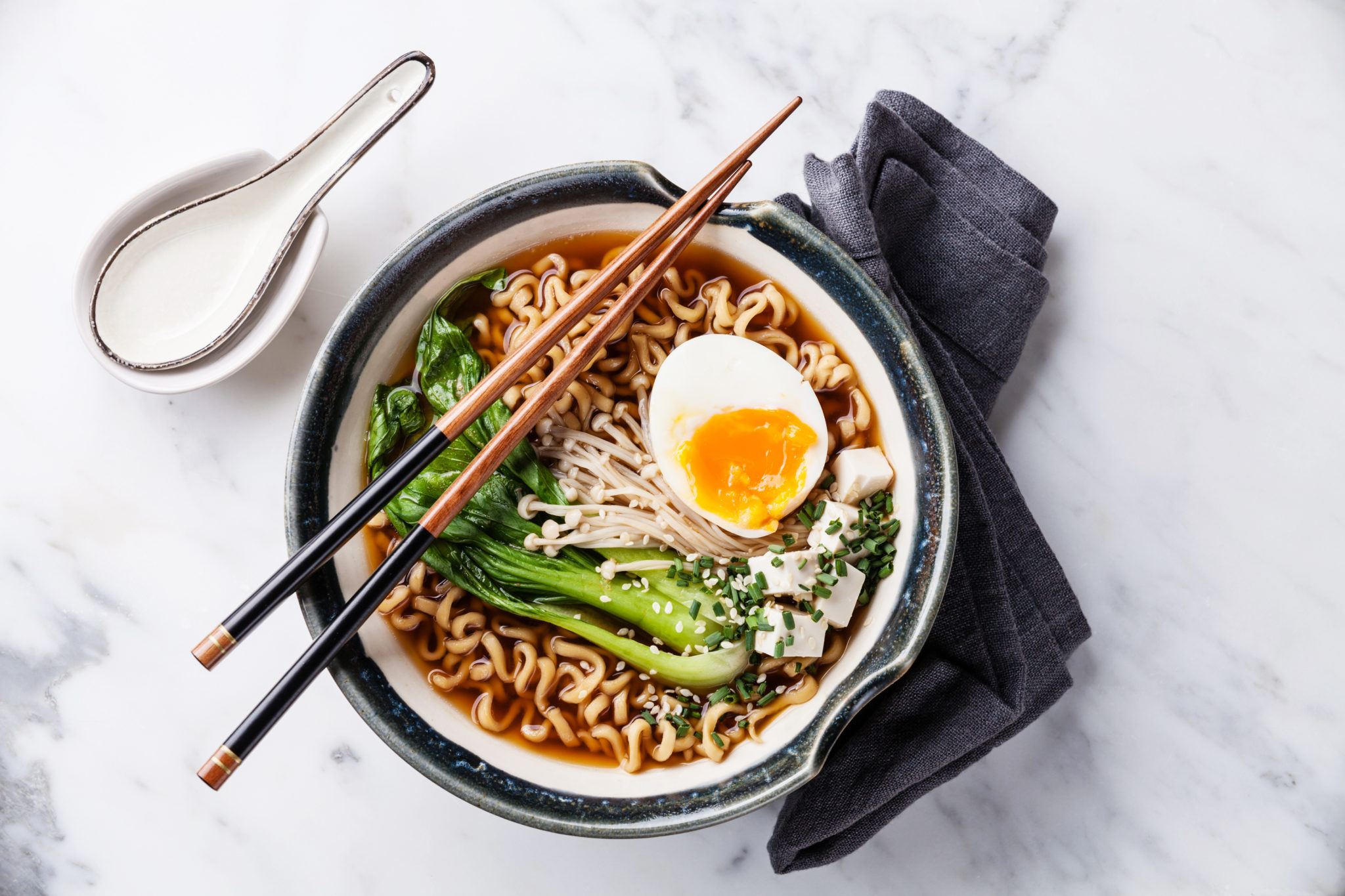
In November 2016, the Japanese-based chain Ichiran opened its first location in the U.S. With over 60 locations across the globe, Ichiran offers what it calls “low interaction dining,” in which people dine alone without conversation or distractions and focus on their food exclusively.
This opening is just the latest development in the growing popularity of ramen in America. It’s more than just a fun craze for diners, and ramen offers plenty of unique learning opportunities for chefs.
If you’ve ever wanted to learn to master the art of ramen, here are four pointers to slurp down like so many noodles:
“Ramen stock should always be nice and cloudy, which helps with flavoring.”
1. Focus on the stock
Ross Shonhan is the head chef at London’s Bone Daddies’ ramen bar. Speaking with Bureau of Taste, he explained that that the tastiest ramen begins with the stock. In traditional ramen, you want a broth that ends up nice and cloudy; that coloring means the gelatin is intact, and that’s going to make for a better tasting bowl overall.
When it comes to adding extra flavor to the broth, Shonhan suggested keeping it simple with add-ins like chili, sesame paste and garlic. The aim is to keep it straightforward so you’re not overpowering the bowl with complex flavors.
2. Practice makes perfect
As the unofficial ramen master at North Carolina’s Basan Sushi, chef Toshi has spent years perfecting his approach to this scrumptious noodle dish. With all that experience, Toshi believes that chefs should never be afraid to experiment with ingredients. Keeping in mind the simplicity of ramen, there are still no limits when it comes to putting in whatever you deem delicious.
Most ramen bowls in the U.S. contain pork and chicken as the meats, alongside core add-ins like chili sauce, carrots and miso. But the aim is to develop a bowl that you’ll find most satisfying and to achieve the right balance of flavors no matter what ends up in the pot.
3. Know your noodles
As important as the stock is to any bowl of ramen, The Kitchn added that chefs should never forget the value of properly cooked noodles. As a rule, you want to have noodles that are similar to al dente pasta. That way, you avoid the tough textures of undercooked noodles, but you also prevent the sogginess caused by overcooking.
To ensure the best noodles possible, try cooking them last, after everything else is done, as this will let you watch them more carefully. As an extension, continually taste your noddles until you hit that sweet spot.
4. Take time with noodles
If you really want those immaculate ramen noodles, SF Station suggests making your own from scratch. Those chefs handy with a food processor can easily make their own noodles without it turning into an all-day ordeal.
However, as SF Station explained, the right ramen noodles require two key ingredients. The first is potato starch, which not only prevents sticking but will also cut down on the grease inside the broth. You’ll also need Kansui, or alkalinized water, which helps with color and the fragrance of your noodles. As a rule, six noodle servings will require two tablespoons of Kansui.



